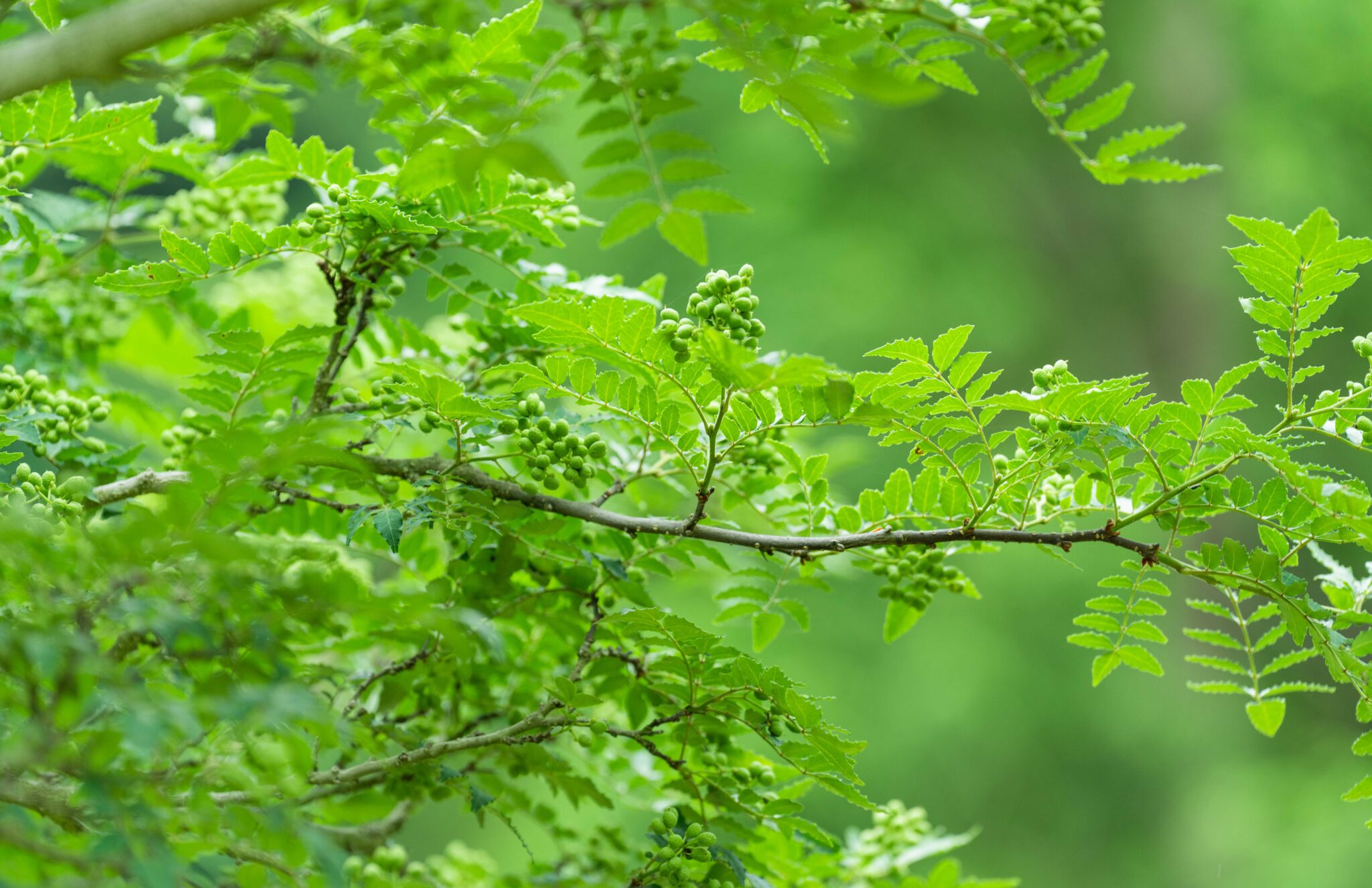Sansho is a beloved spice in Japan, cherished for centuries.
Its history dates back to ancient times, with evidence suggesting its use as early as the Jomon period (14,000–300 BC). It is even mentioned in the Nihon Shoki (Chronicles of Japan), possibly making it Japan’s oldest spice.
Wakayama Prefecture is the country’s largest producer of sansho. Among its many varieties, grape sansho originated in Wakayama. Named for its distinctive fruiting pattern, which resembles grape clusters, it has larger berries than other varieties. It is prized for its refreshing citrus aroma and is often referred to as the green diamond, a testament to its luxurious quality.
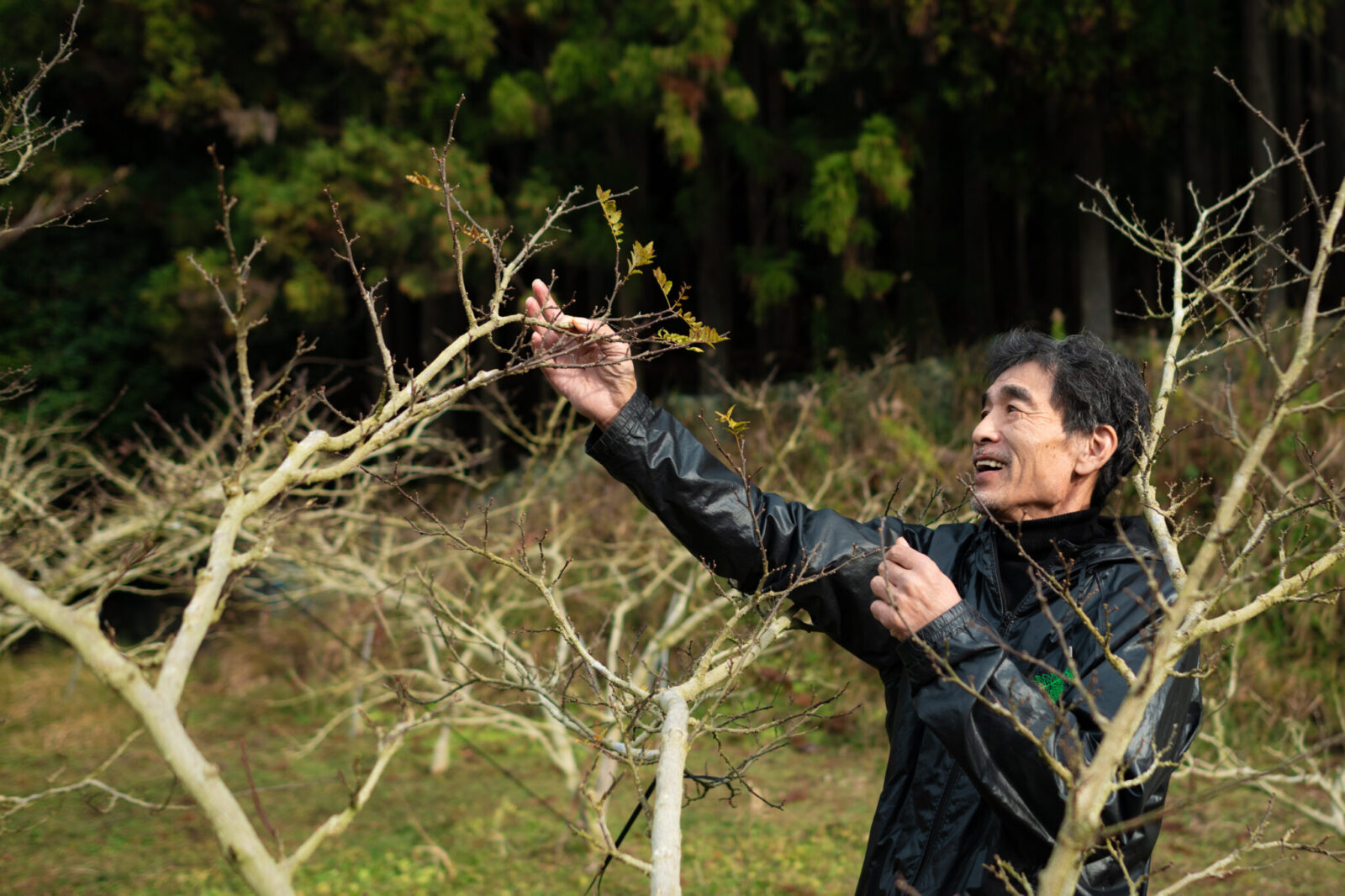
We interviewed Fuyuki Nagaoka, a sansho farmer at Kanja Sansyou-en, who cultivates organic grape sansho in the lush mountains of Aritagawa, Kishu.
The Roots of Japanese Cuisine in Wakayama
As you venture deeper into the mountains, you soon find yourself surrounded by vibrant mandarin orange orchards. When we visited in early winter, the ripe yellow and orange fruits hung from the trees like tiny bells.
Wakayama is well known for its mandarin oranges, but what many may not realize is that sansho belongs to the same citrus family. This connection explains its refreshing citrus aroma, a characteristic that makes it a prized spice in Japanese cuisine.
Kanja Sansyou-en is nestled deep within Miyagawa Valley, a tributary of the Arita River, surrounded by lush green mountains. It is a quiet, picturesque countryside—almost like a scene from a storybook.
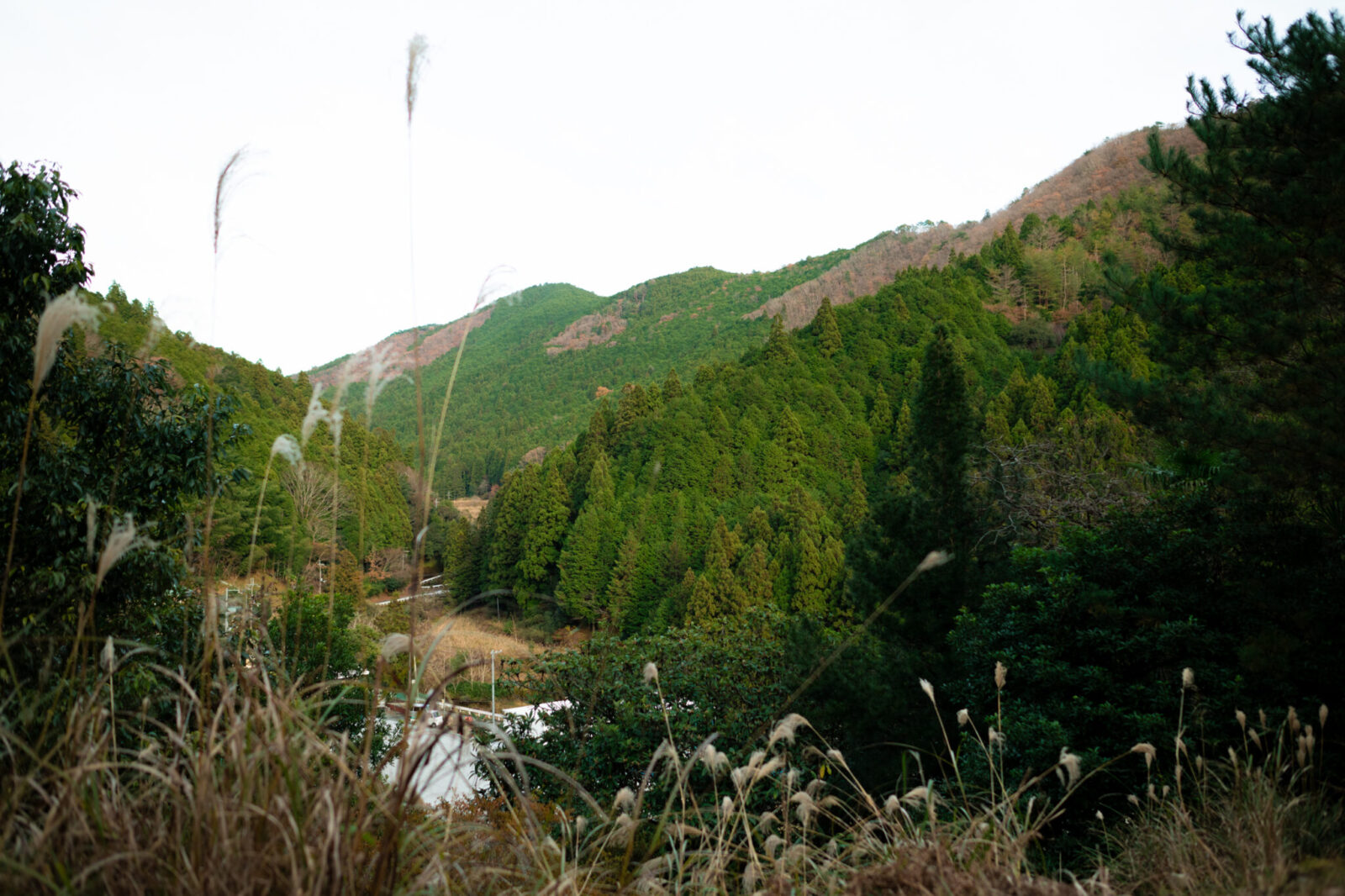
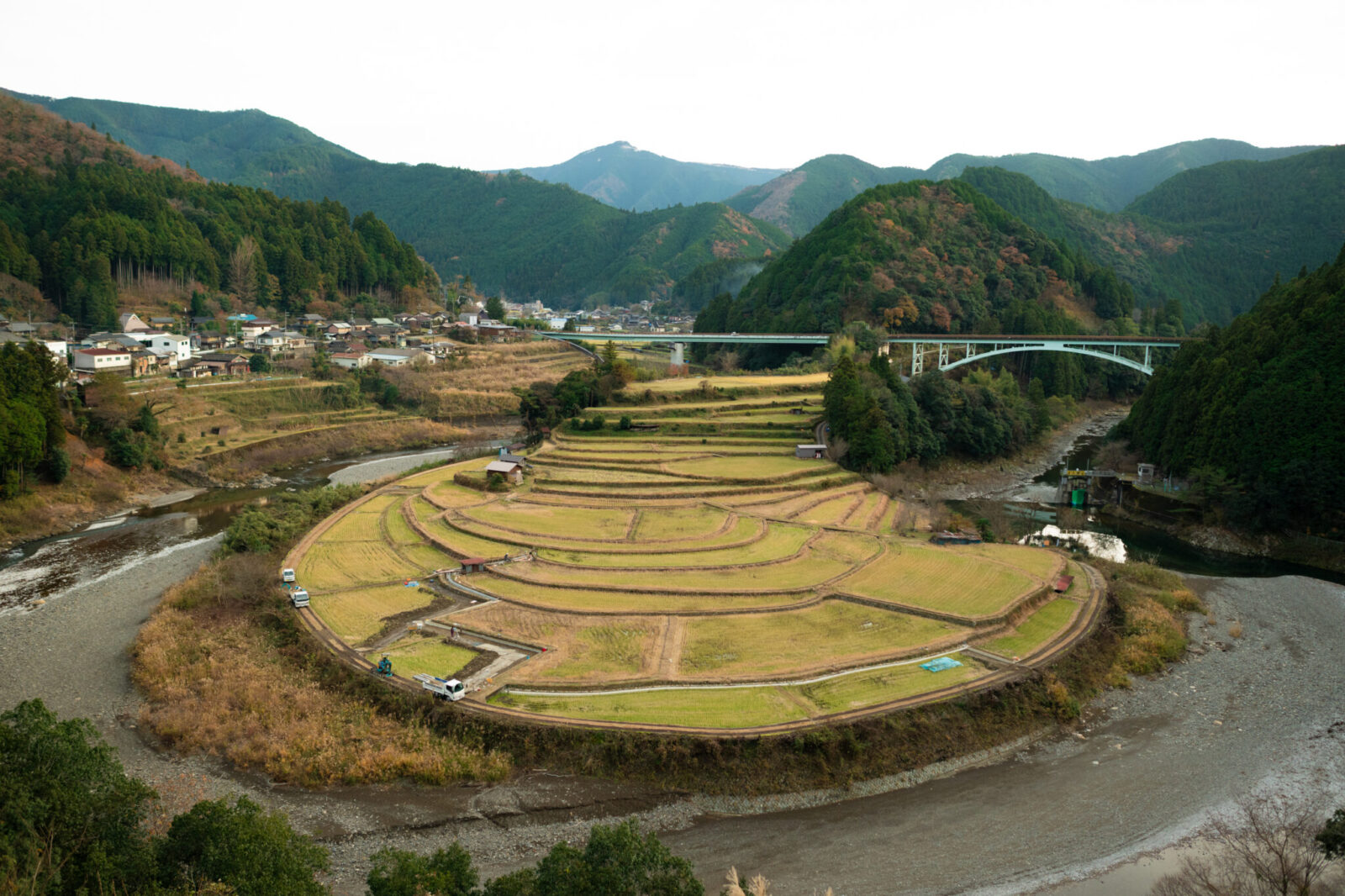
Wakayama Prefecture holds a significant place in the history of Japanese cuisine.
It is the birthplace of many essential seasonings and foods that define Japanese culinary culture, including soy sauce, bonito flakes, sushi (nare-zushi), and Mazuma wasabi—originally from Inan-cho (formerly Mazuma Village) before its primary production shifted to Shizuoka.
Wakayama is also home to Nanko-ume, Japan’s top brand of plums, originating in Minabe-cho. As the nation’s largest producer of umeboshi (pickled plums), the region has played a crucial role in shaping Japan’s food traditions.
Beyond these contributions, Wakayama is also Japan’s leading producer of sansho, accounting for 60% of total production, far surpassing any other region.
The history of sansho in Wakayama dates back to the Heian Period (794–1185), with records of its use appearing in the Engishiki, an ancient collection of laws and regulations.
There are several varieties of sansho grown across Japan, including Asakura sansho, primarily cultivated in Hyogo Prefecture, and Kogen sansho, found in Okuhida, Gifu Prefecture. However, Wakayama takes the most pride in its Grape Sansho.
Discovered at the end of the Edo Period (1603–1867) in the village of Toi (now Aritagawa-cho), Grape Sansho was revered for its distinctively large berries and has since become deeply rooted in the region’s agricultural heritage.
The large berries and refreshing aroma are not only valued in Japan but have also garnered the attention of chefs and patissiers around the world.
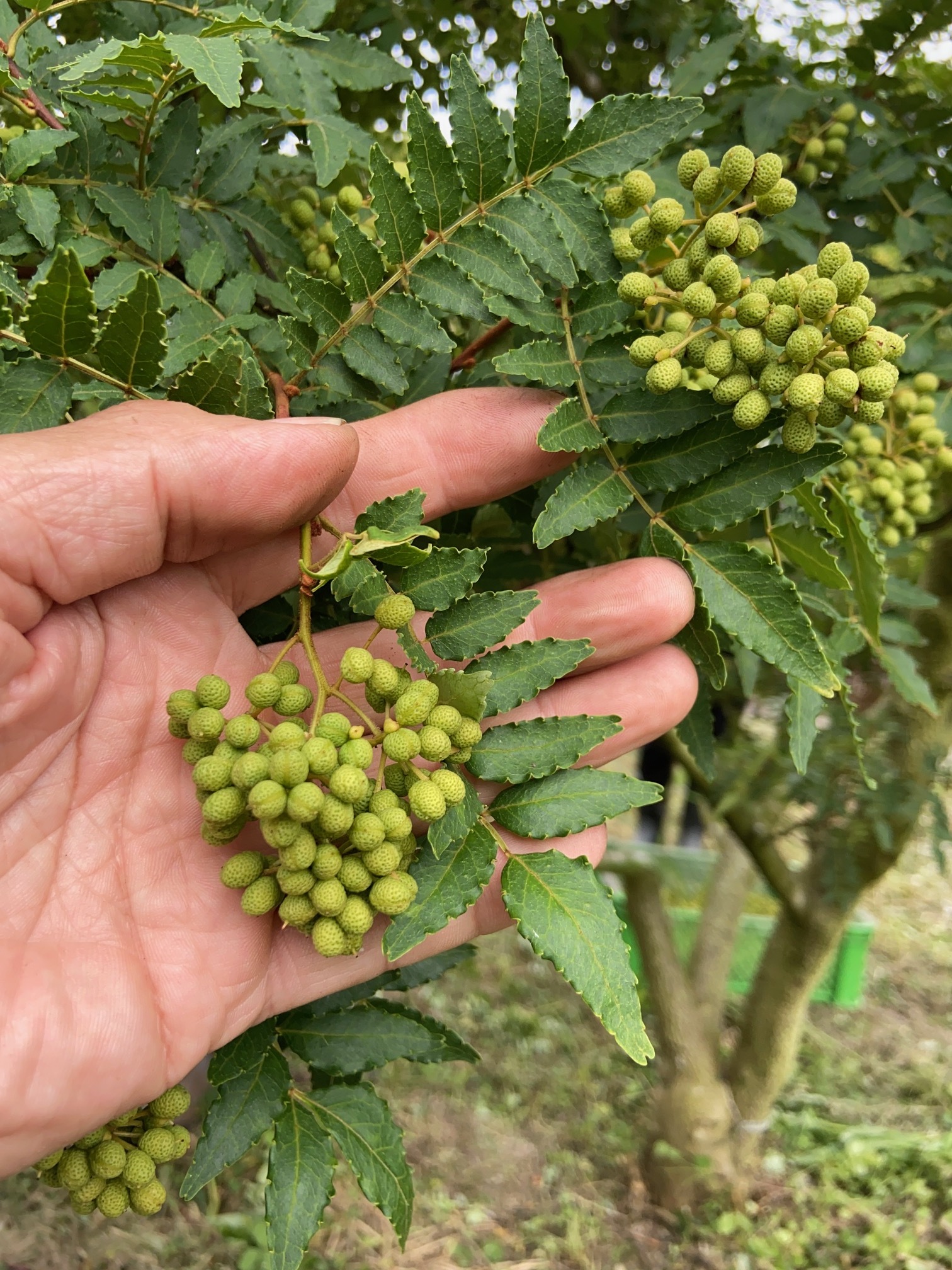
Sansho originated from a sudden mutation in a land rich in vegetation
Nagaoka shares, “This region has always been blessed with clear water, and many local landmarks are named after it.”
According to legend, Kobo Daishi visited this area before establishing the temples of Koyasan. It is said that he initially considered this site but was compelled to move after the gods concealed the rivers.
“It’s believed that grape sansho first emerged as a sudden mutation, but I have a theory that this land has a unique magnetic field that fosters such natural changes. Perhaps Kobo Daishi was also drawn to that unseen force.”

Wakayama Prefecture boasts a remarkably diverse climate and ecosystem within a relatively compact area. The southern region is home to subtropical seas with coral reefs, while the northern mountains experience snowfall as deep as in Hokkaido.
Nagaoka notes that the area has long been a crossroads, attracting people drawn to its natural abundance and unique characteristics.
Given this rich environment, it’s no surprise that Wakayama has a deep-rooted history of cultivating a wide variety of agricultural products and developing traditional fermented preserved foods.
Although our visit took place in winter—outside the sansho harvest season—the bare branches revealed a quiet elegance. The trees stood with a dignified yet delicate presence, their supple limbs glowing with a faint greenish light from afar.
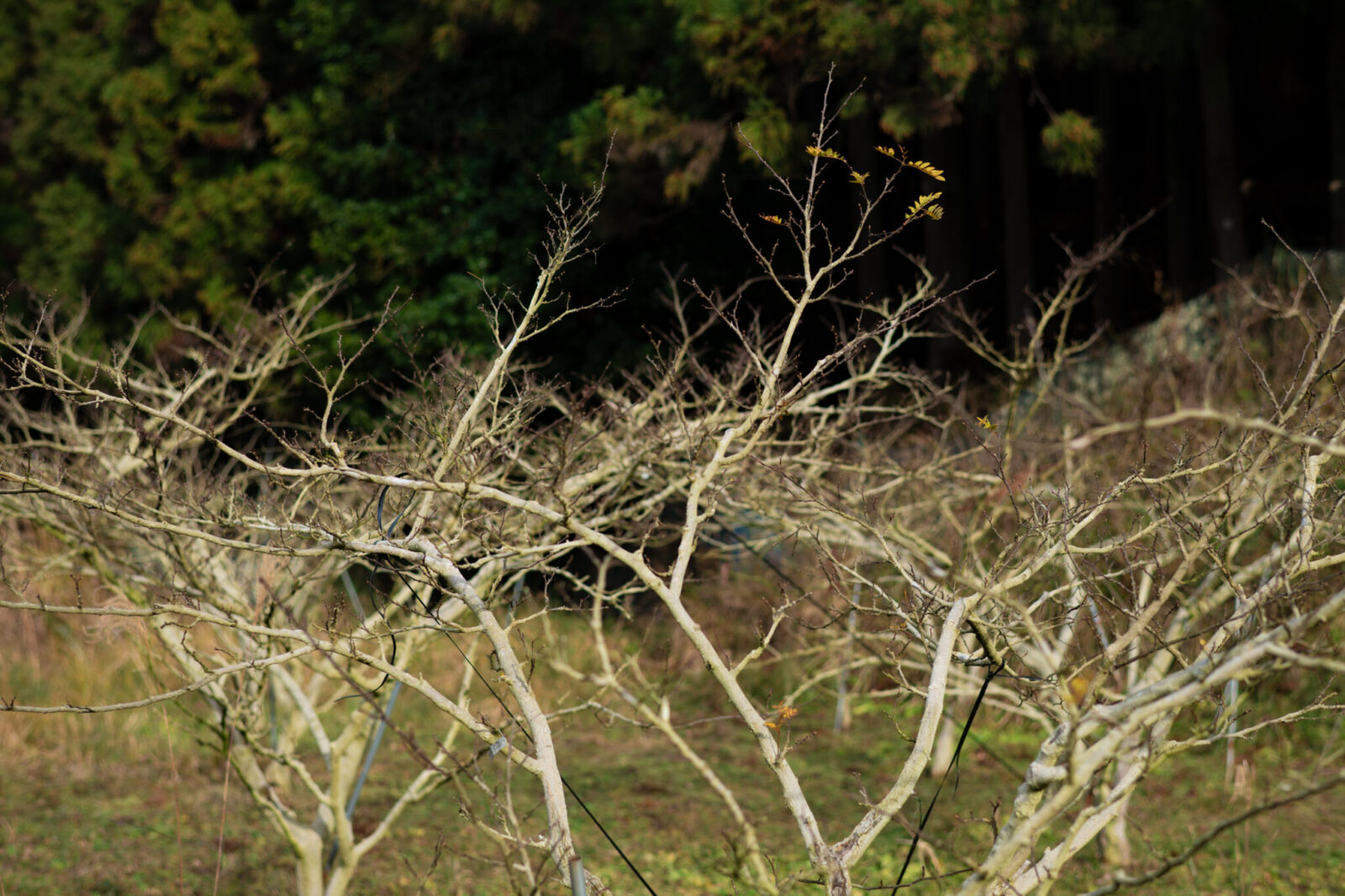
Grape sansho has a fresh citrus aroma
“Grape sansho is easily recognizable due to its unique aroma and the size of its berries, which sets it apart from other varieties. The berries are large and have a fresh, citrus-like fragrance, reminiscent of bergamot. Its distinctive aroma has made it popular overseas, especially in desserts like chocolate and gelato, where the familiar citrus scent complements the flavors.”
Kanja Sansyou-en has always embraced organic cultivation for their sansho. While the trees have relatively shallow roots and are quite delicate, Nagaoka discovered that overusing pesticides to care for the trees only weakens them, making them more vulnerable to damage from typhoons and other natural disasters.
By planting the saplings in their natural environment from a young age, the trees are encouraged to develop strong, deep roots, ensuring a stable foundation for their growth.
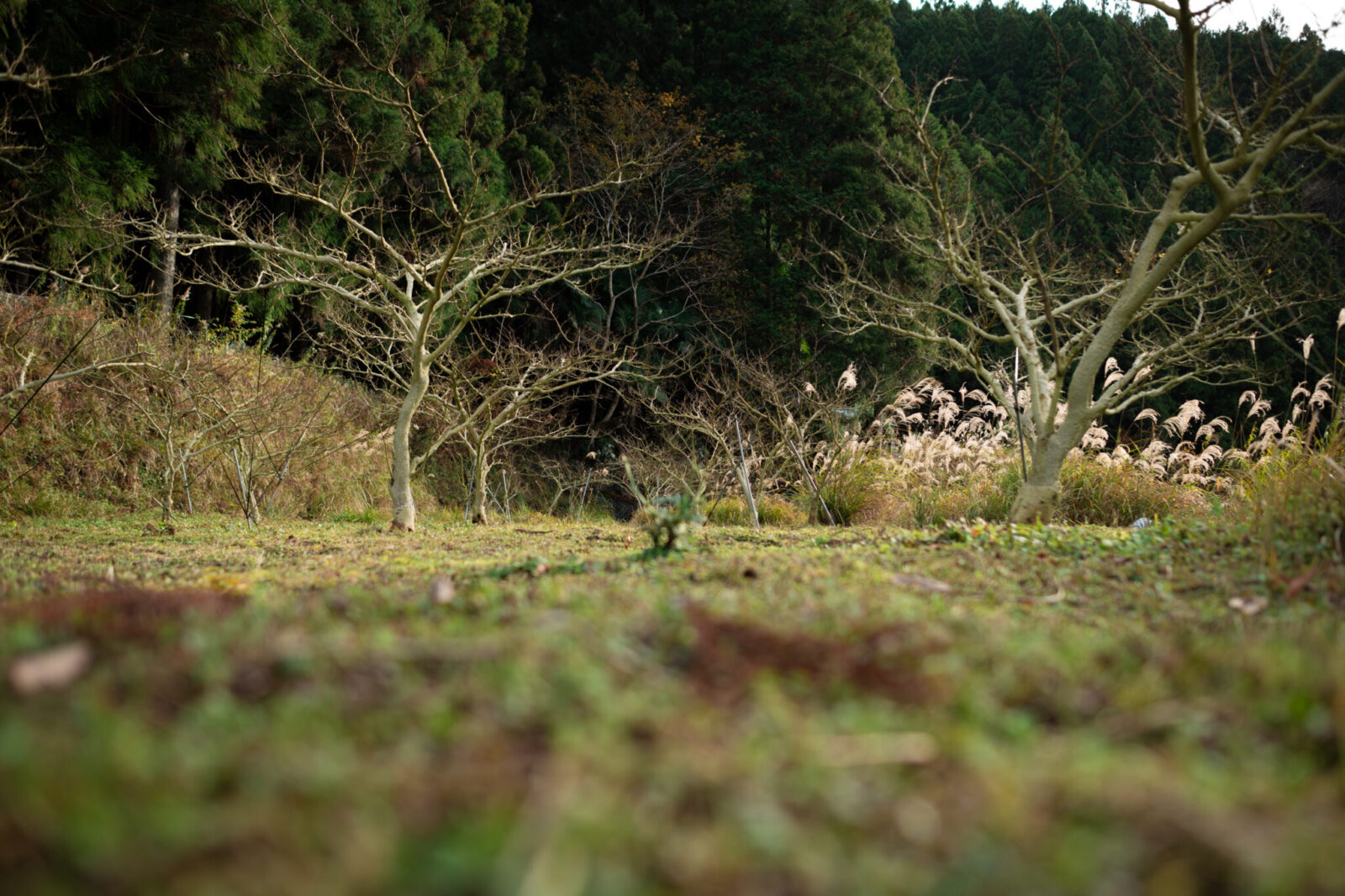
“The sansho is a shrub that naturally thrives under larger trees, preferring moist soil and minimal sunlight. This region has always been ideal for sansho, and the mountainous terrain here provides the perfect environment for its growth.”
“Being sheltered by the mountains, the trees only receive a few hours of sunlight each day. The sun doesn’t reach them until around 10 am and is already gone by 3 or 4 pm. If we grew them on flatter land, we’d have to invest more effort into tasks like watering and protecting them from cold air with cloth. But here, in its natural state, it grows effortlessly and thrives.”
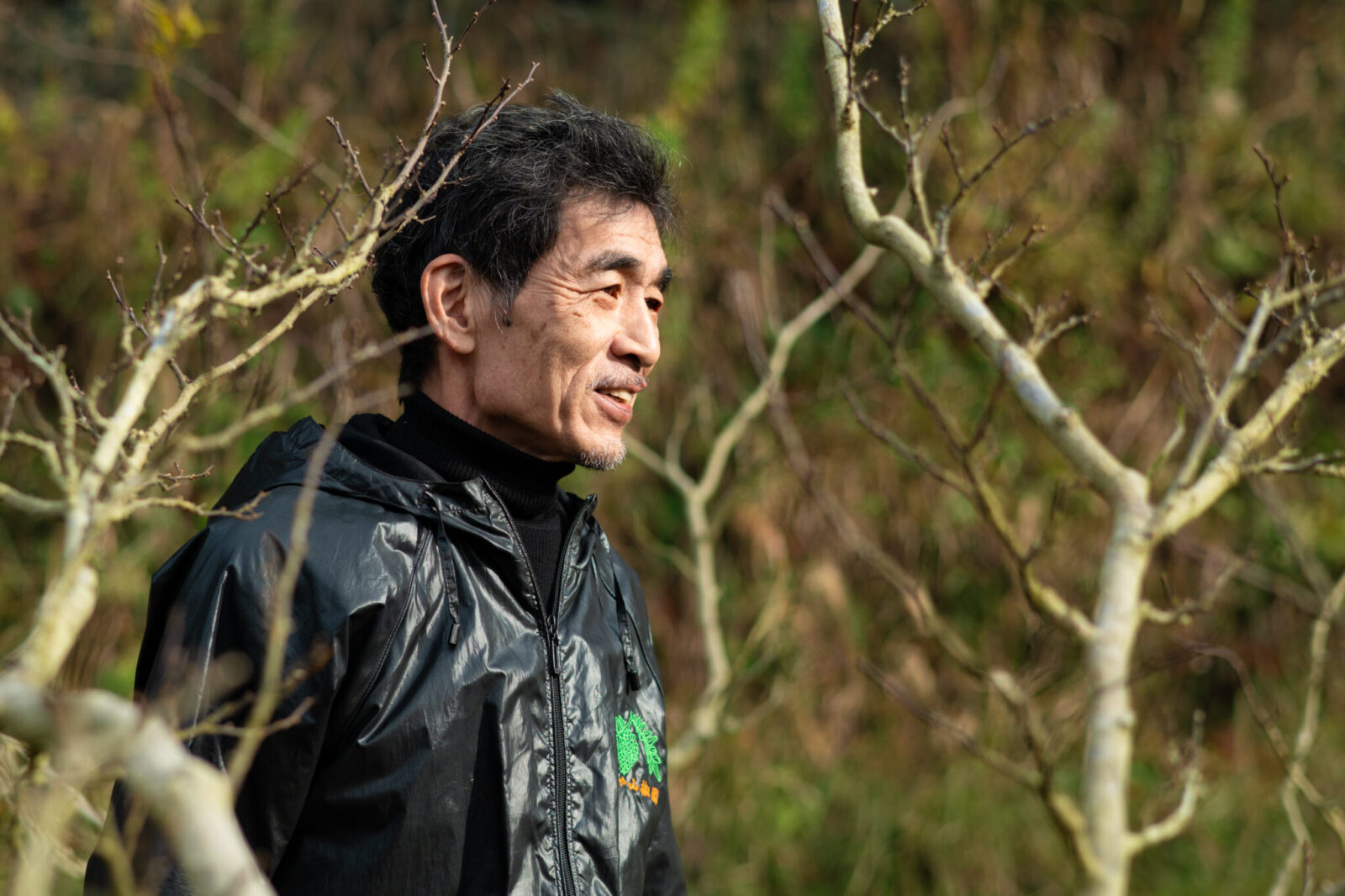
Other aromatic Japanese spices, such as nikki (Chinese cinnamon), red shiso (Perilla frutescens), and yuzu (citron), which were once valued for their medicinal properties, are said to thrive in this region. The temperature difference between day and night is believed to help intensify their aromas.
This area is truly a treasure trove of Japanese spices, with some of the plants still cultivated for use in traditional Chinese herbal medicine. Nagaoka guided us through the slopes, pointing out a cinnamon tree that was planted on the mountainside.
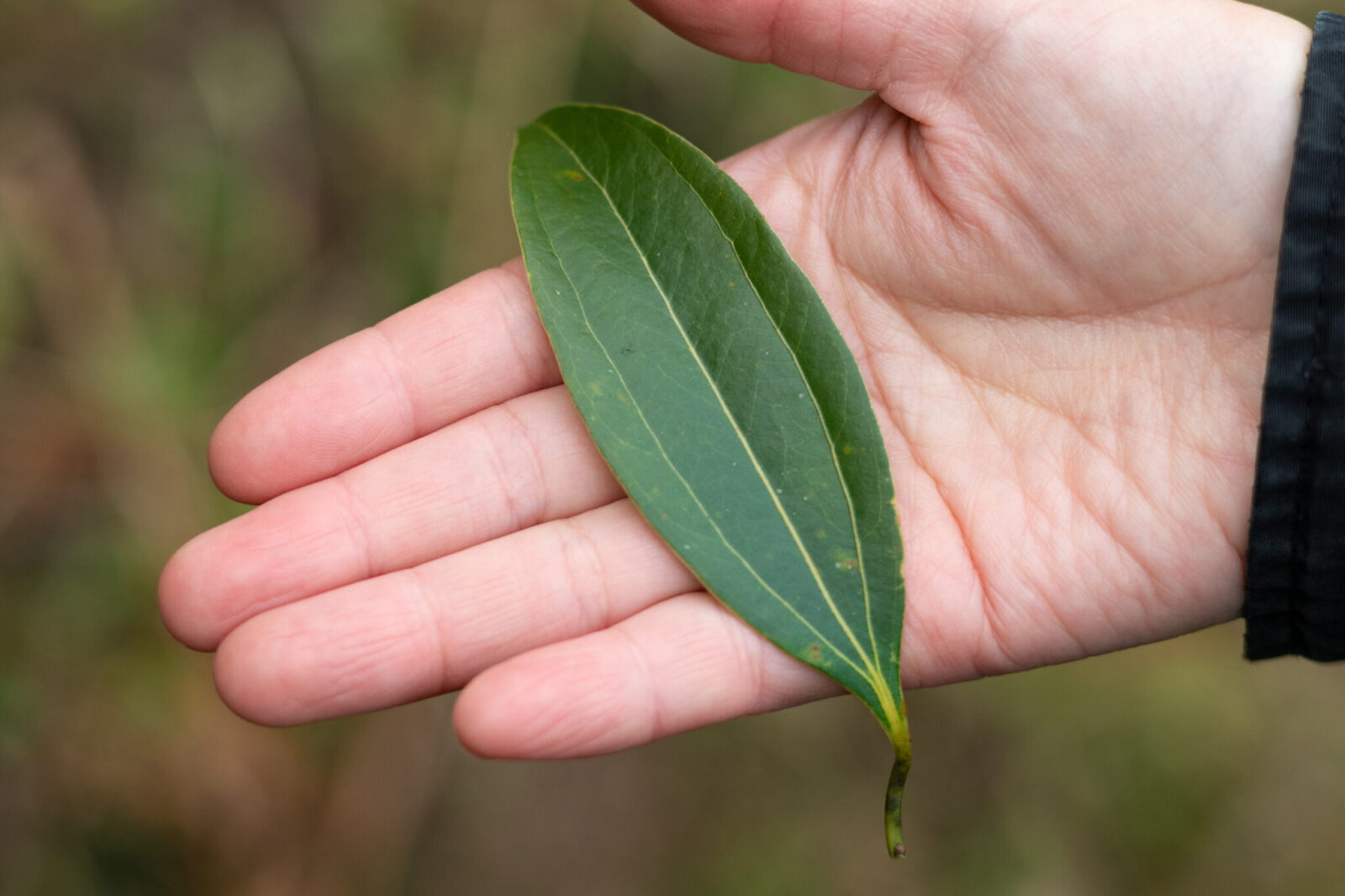
A sniff of the leaves envelops you in a fresh, invigorating aroma that makes you want to take a deep breath.
“Nikki cinnamon has historically been cultivated in areas such as Kagoshima, Miyazaki, Kochi, and Wakayama, and was distributed in Kyoto. The Nikki cinnamon used to make the famous Kyoto confectionery Yatsuhashi is said to come from this region.”
Why Nagaoka started sansho farming when prices were plummeting
Nagaoka, born in this region, began working on revitalization projects within the local community after graduating from university. During the 1980s and 90s, large amounts of government subsidies were being distributed, but Nagaoka was uncertain whether relying on this approach would truly secure a prosperous future for the region.
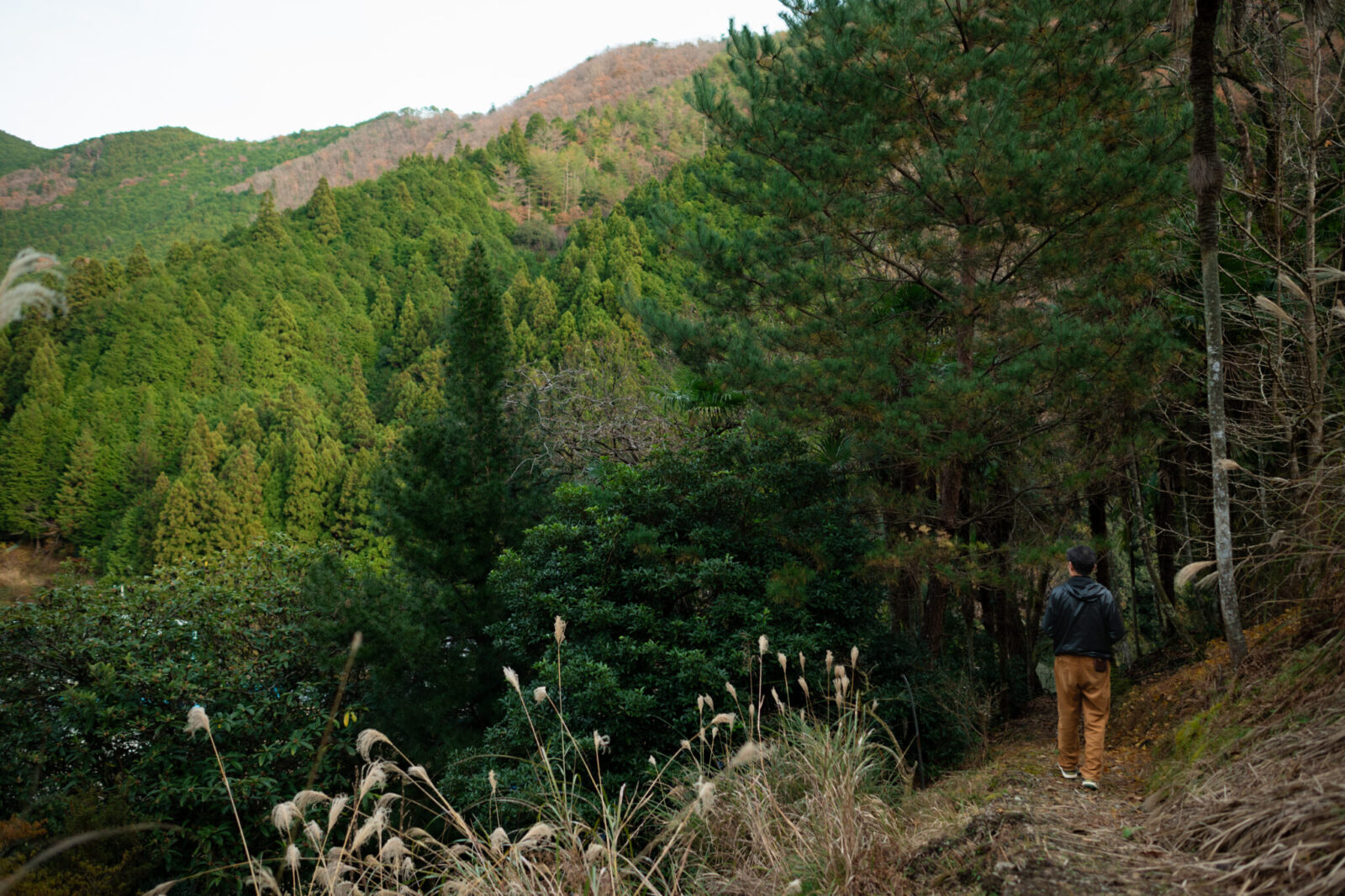
He decided to leave his hometown and, along with his family, moved to work for an agricultural corporation. The culture of the corporation encouraged experimentation and collaboration, where coworkers exchanged information and discussed various agricultural cultivation methods.
He spent ten years learning and gaining experience there, and after trying several other roles, he returned to his homeland in 2004. By then, the mountains and forests had fallen into disrepair, and the local population was dwindling. He began to think about what he could do to revitalize his shrinking hometown.
“Although sansho from this area was historically traded at high prices for its medicinal value, by 2004, the price of sansho had plummeted. I entered the sansho farming business during a time when people were saying there was no future in it. People ridiculed me, asking, ‘Why now?'”
“It saddened me to see a historic agricultural product disappearing from this region. I firmly believe that if we could properly promote its value and appeal, it would certainly be appreciated by consumers.”
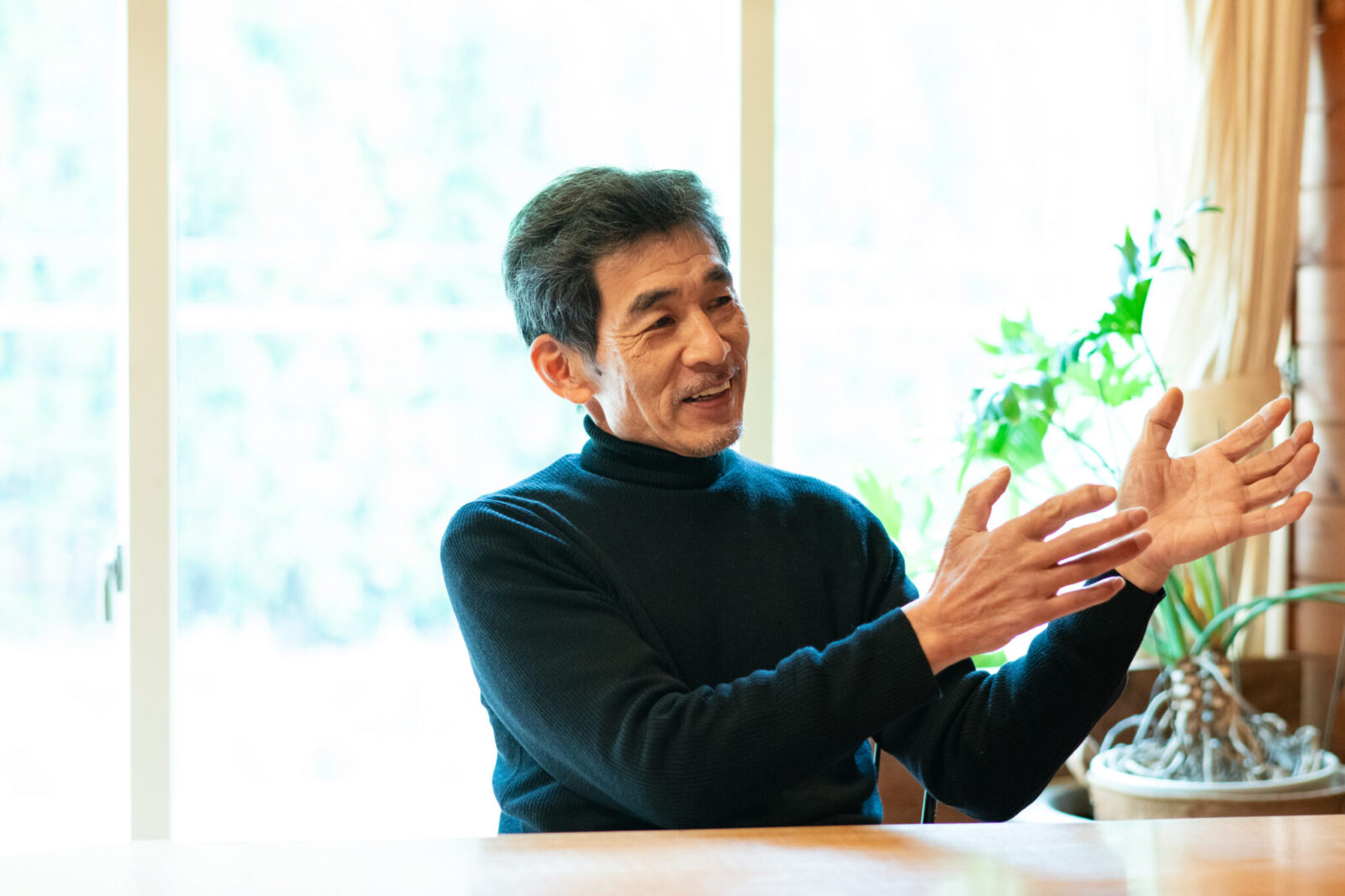
Although he didn’t have much money to start with, the internet had become widespread by that time, allowing him to set up an online shop and sell his produce directly to consumers. He also tried selling his products in train station concourses, but initially, people didn’t show much interest. Many still associated sansho with the familiar flavor and sensation of the powdered spice typically served with eel.
However, there was certainly a group of people who loved sansho, and he began receiving very positive feedback from his customers. To further promote his grape sansho, Nagaoka opened a cafe where he could showcase different ways to enjoy the unique flavor of his produce.
The cafe served a variety of dishes, including curry, pasta, sweets, chai, and more—all made with sansho. As more people discovered the distinct taste of his grape sansho, it began to change their perception of the spice.
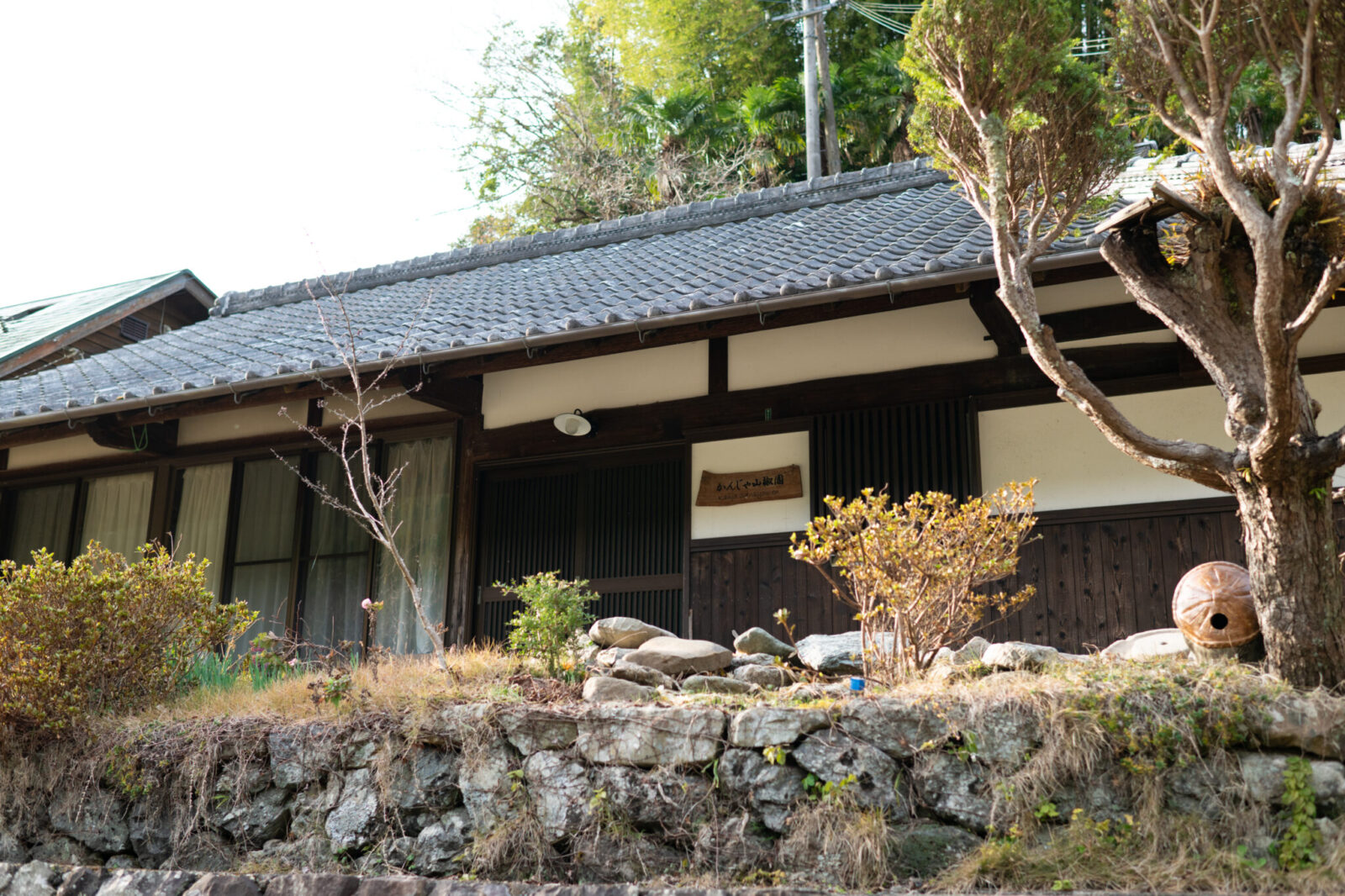
“Rather than simply aiming to make a profit, my goal was to create a truly high-quality product that people would love. I also wanted to build a local business. I believed that if we did our best and made the highest quality products possible, we would naturally find people who would support us.”
“I once had a mentor who taught me to follow the laws of nature. This mindset has served as a guiding principle for our way of life. Just as water flows from top to bottom, the reputation of our sansho spreads naturally and effortlessly.”
Nagaoka says the people of Wakayama share the philosophy of Kobo Daishi, the great Buddhist priest. They are kind-hearted and not only think about themselves but also care about the wellbeing of others. They don’t resist what comes their way. When they find something they believe is good, they don’t keep it to themselves; instead, they tend to share it with everyone, allowing it to spread and grow.
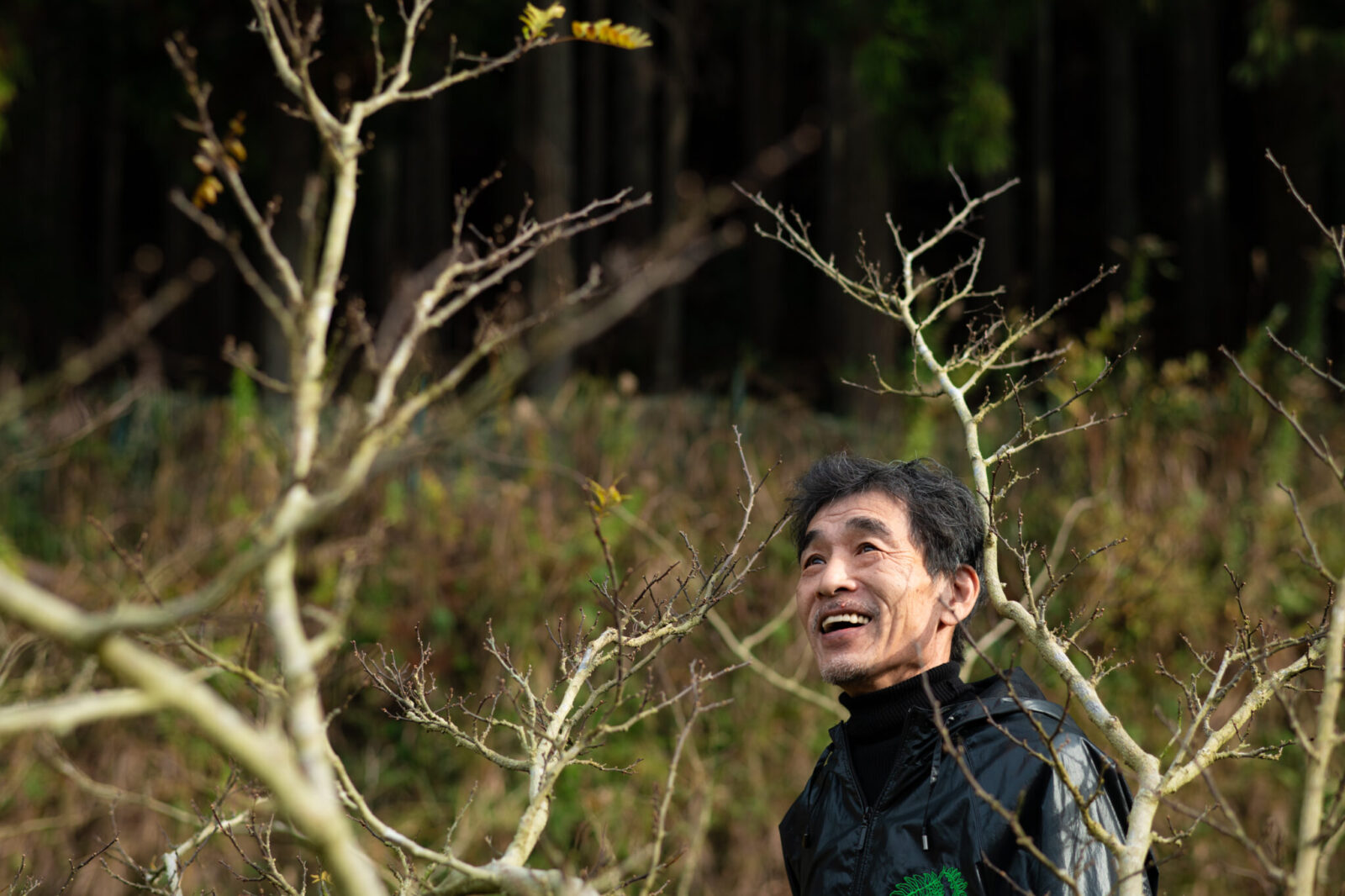
When the prefecture’s representatives for overseas exports learned that grape sansho was garnering attention in Europe and the US, they enthusiastically helped promote it by taking it to various countries.
As its popularity grew overseas, it eventually landed in the hands of chef Ferran Adria of the three-star restaurant El Bulli, once considered the hardest restaurant to get a reservation at.
“When people find something of value, they want to share that information with others, and sharing makes people happy. It naturally flows like water from one person to the next.”
Today, people from across Japan and around the world, including top-tier restaurant chefs, patissiers, buyers, seasoning manufacturers, and more, have discovered Nagaoka’s product, with some even visiting his farm.
From soft serve ice cream to chai tea, a wide variety of sansho menu items
About five minutes away by car from the Kanja Sansyou-en is a small Japanese farmhouse style cafe called “kado”. It is located near Aragi Island, one of Japan’s 100 terraced rice paddies famous for its unique shape.
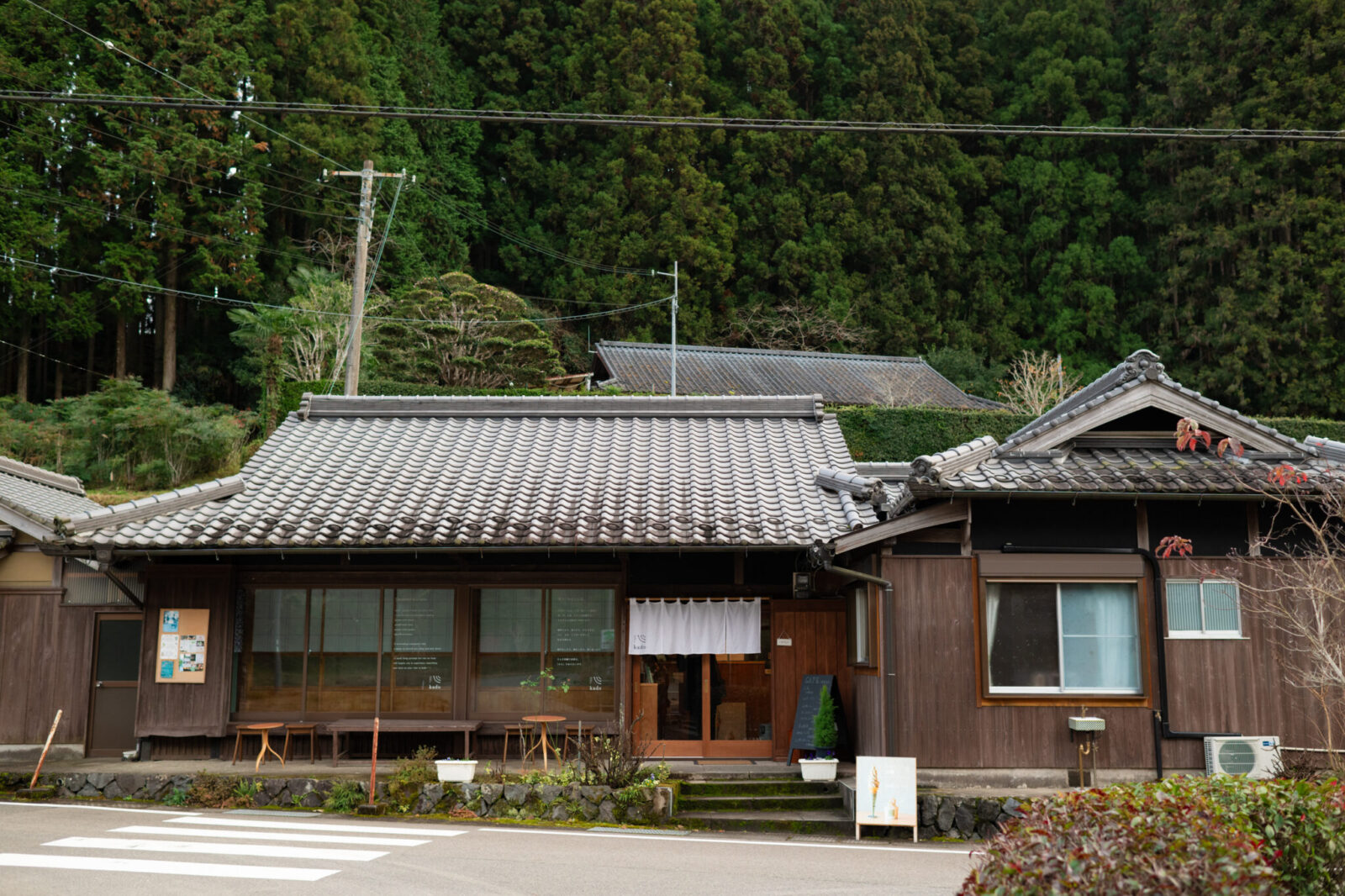
ここではかんじゃ山椒園で育てたぶどう山椒を使ったメニューが楽しめる。
This cafe offers a variety of menu items featuring the grape sansho from Kanja Sansyou-en.
The first dish we tried that left us in awe was the soft serve ice cream. The fruity citrus aroma of the sansho was delightful, and the flavor was wonderfully refreshing. We’re not exaggerating when we say it was a completely new experience, unlike any other soft serve ice cream we’ve ever had.
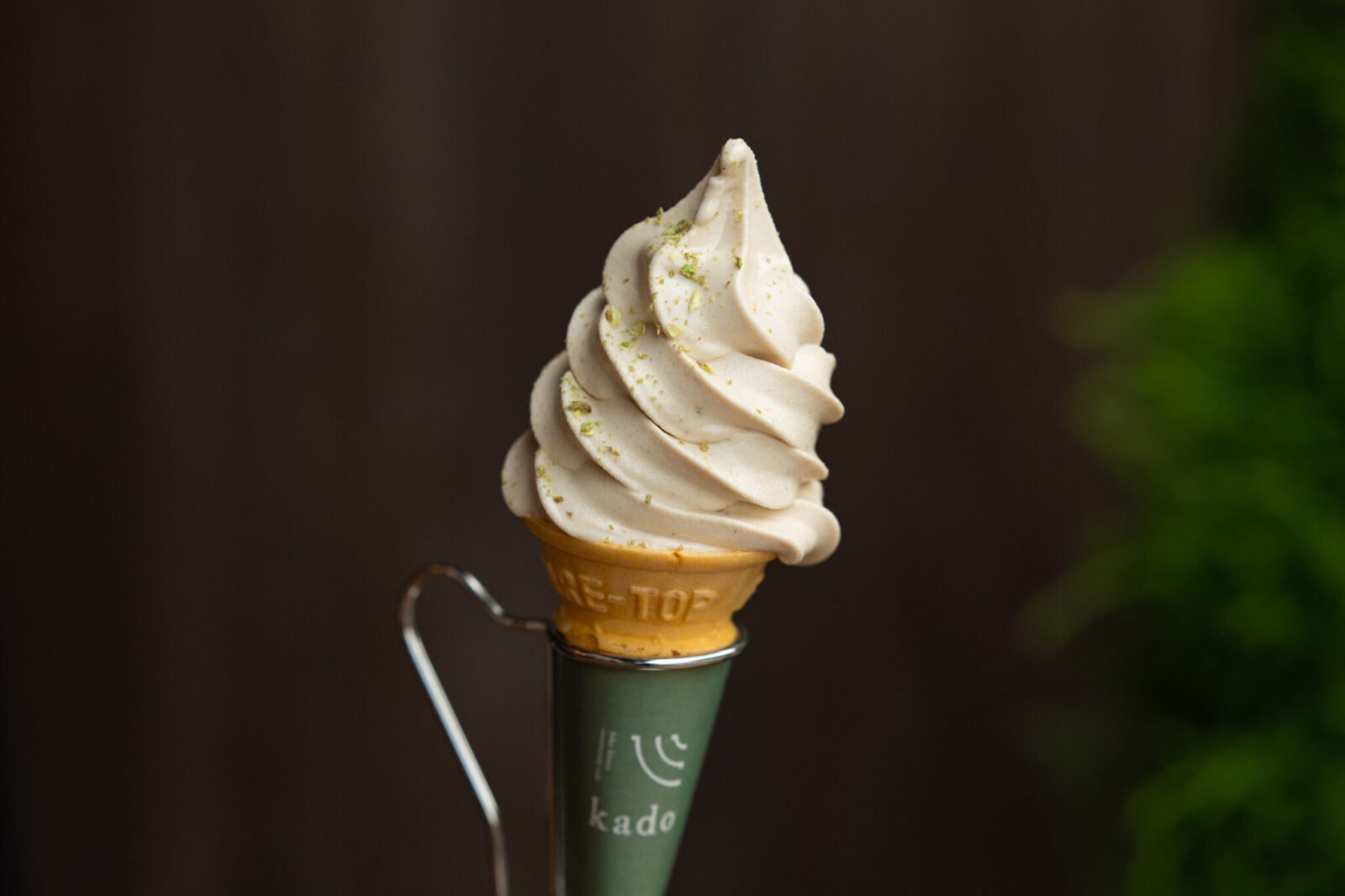
The soft serve ice cream was made with fresh grape sansho paste mixed into the cream, topped off with freshly ground sansho powder to enhance its rich aroma. The ingredients were simple, with minimal additives, and the cream had a light, refreshing gelato-like texture. They also take care in selecting the milk they use.
People travel from near and far, no matter the season, to enjoy this soft serve, and they continue making it even in the winter months.
Nagaoka says, “I aim to make something of the highest quality, not just a local specialty.”
Although their popular gibier katsu burger was sold out for the day, we were able to try the bread used for it. Made with natural yeasts from a rare sansho flower, the bread was soft and fluffy, the kind of bread you could eat endlessly.
The cafe also offers a variety of drinks using sansho, and we tried the sansho chai. This chai was made with Nikki cinnamon leaves, ginger, chili peppers, and sansho. It had an elegant flavor and a fresh, invigorating taste—one you could never tire of.
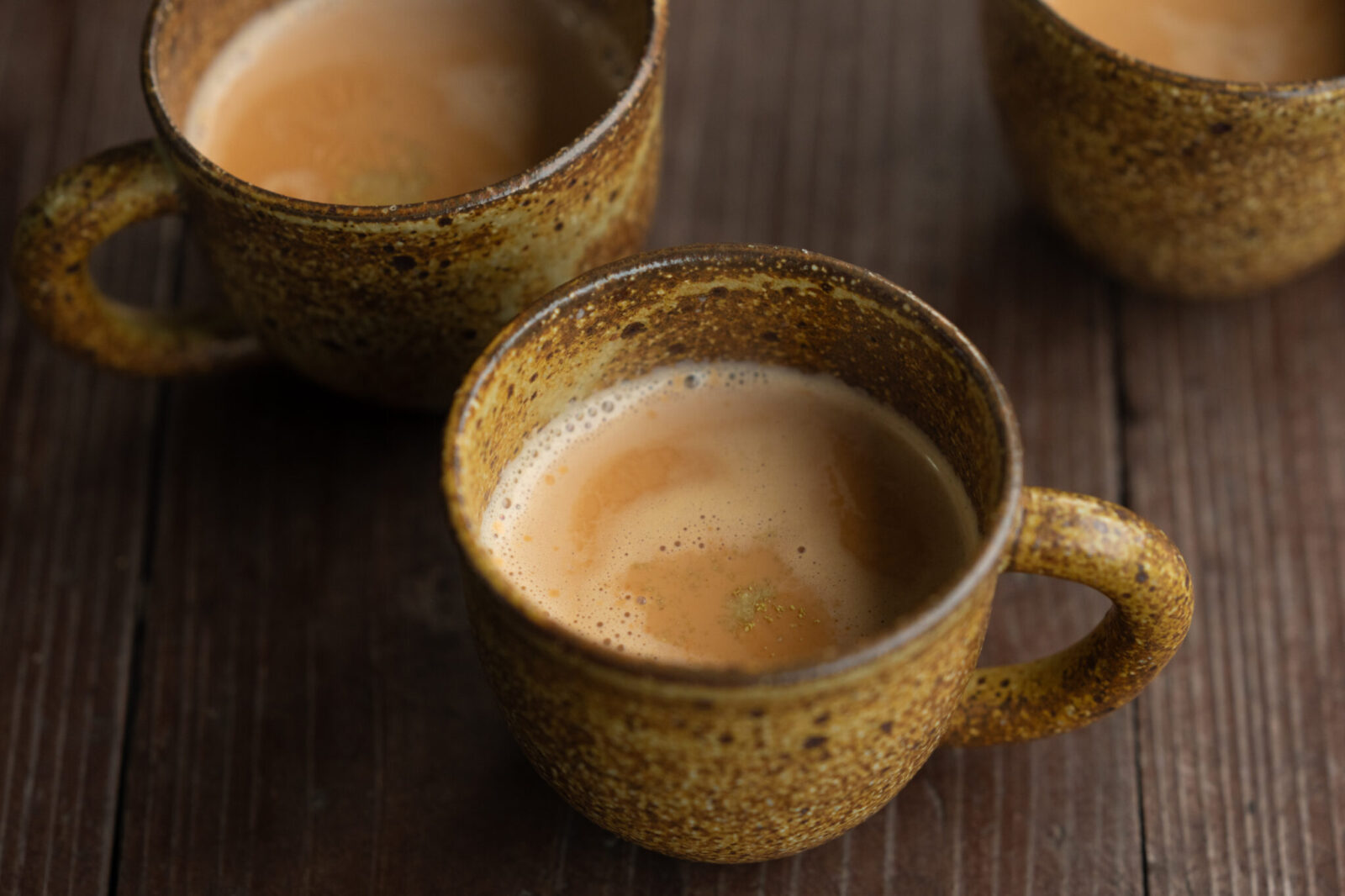
Inside the store, they had a delightful lineup of sansho products, including sansho confit, dried sansho, canned sansho in water, chai mixes, and sweets—perfect for any sansho enthusiast. Each product was thoughtfully crafted to showcase the unique and aromatic flavor of grape sansho.
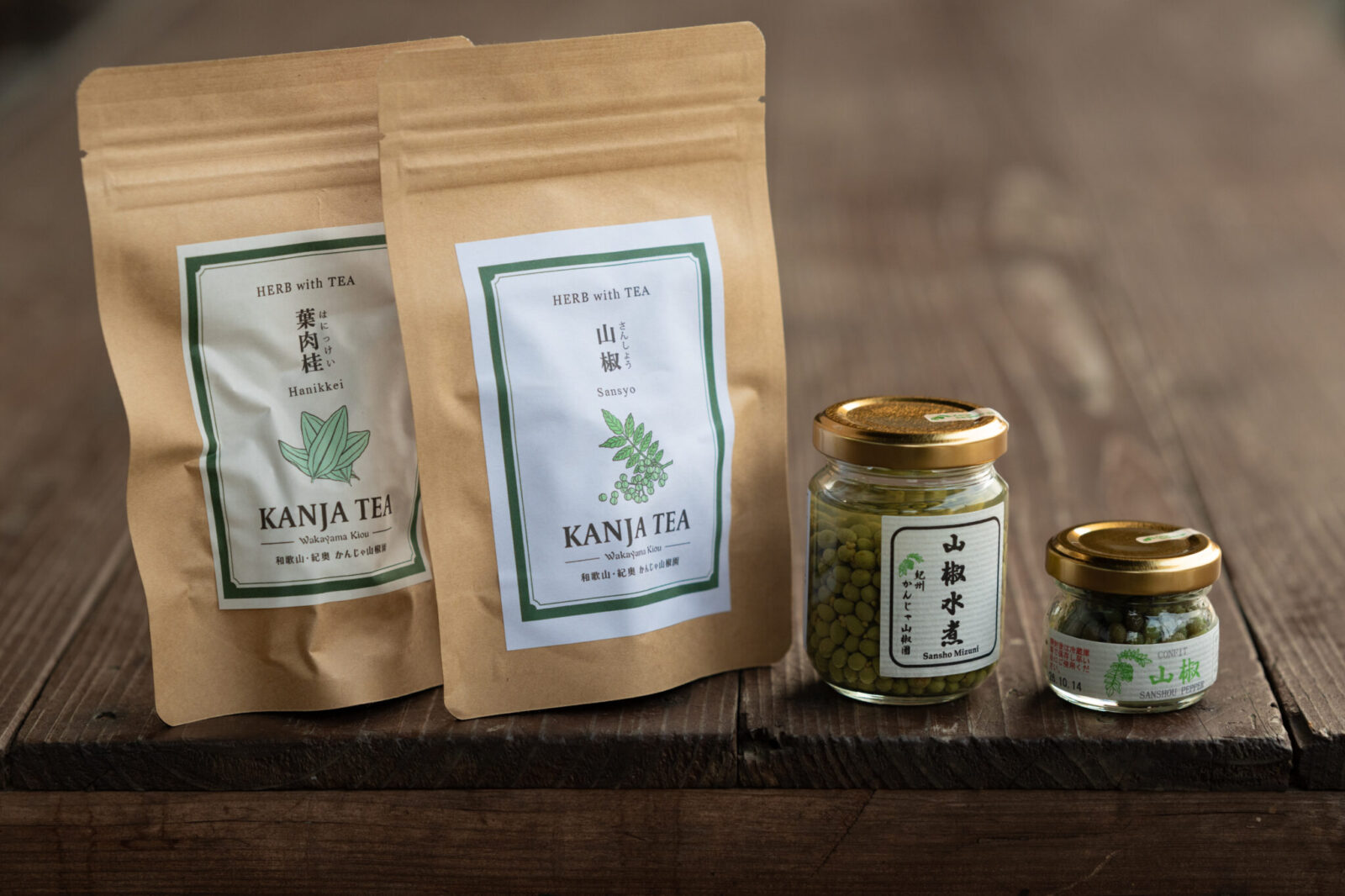
It was truly surprising to find such a wide variety of high-quality sansho products in a small shop nestled deep in the mountains.
The Kanga Shansho-en’s steady and honest approach to promoting Wakayama’s grape sansho has helped it grow while keeping their roots firmly in the ground.
Their sincere efforts hold immense potential, and the Japanese spice, “grape sansho,” is poised to spread its wings and reach even greater heights worldwide.
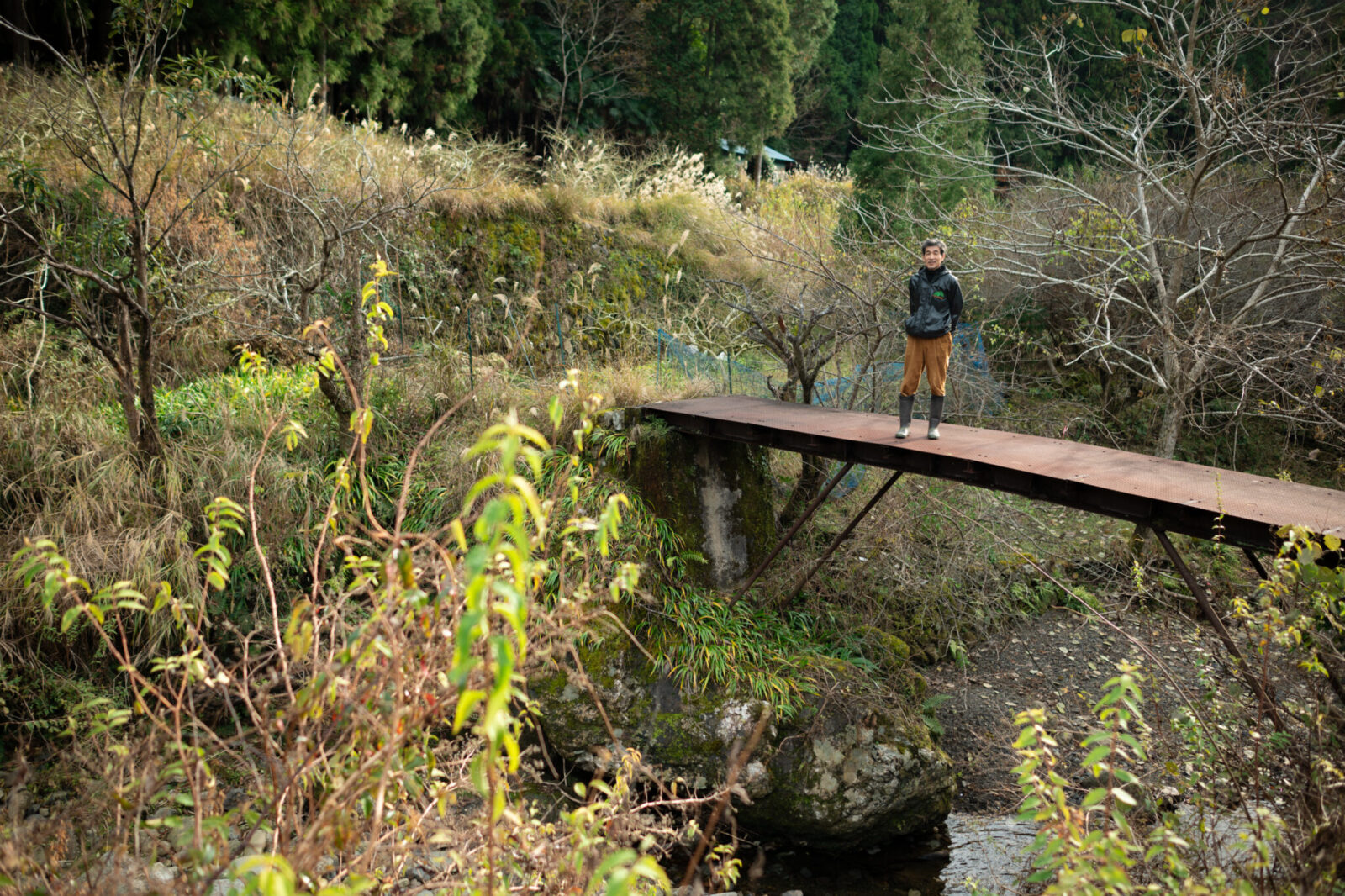
Transration: Sophia Swanson
Advisor to corporations, and local governments on promoting local tourism. Published work includes, “Aomori & Hakodate Travel Book” (Daimond), “San’in Travel: Craft and Food Tour” (Mynavi), “A Drunkard’s Travel Guide: Sake, Snacks, and Tableware Tour” (Mynavi). Her life work is to explore towns in her travels, drink at different shops and visit the workshops of different crafts. Interests include tea, the Jomon period, architecture, and fermented foods.
Editor. Born and raised in Kagoshima, the birthplace of Japanese tea. Worked for Impress, Inc. and Huffington Post Japan and has been involved in the launch and management of media after becoming independent. Does editing, writing, and content planning/production.
